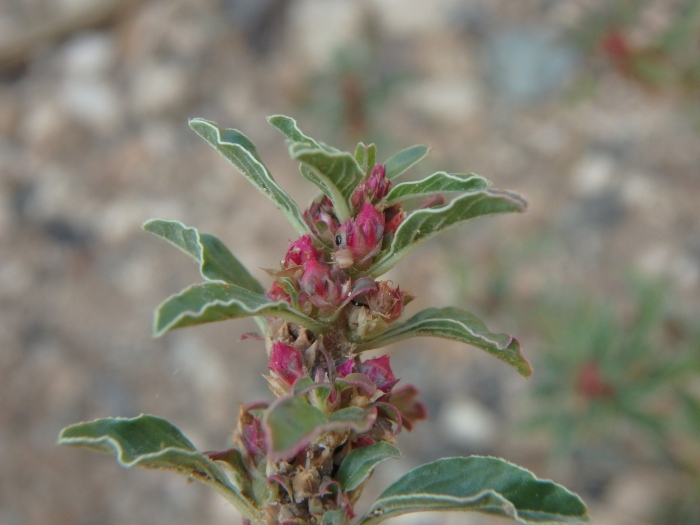Mat Amaranth
(Amaranthus blitoides)
Mat Amaranth (Amaranthus blitoides)
/
/

Daniel Cahen
CC BY 4.0
Image By:
Daniel Cahen
Recorded By:
Copyright:
CC BY 4.0
Copyright Notice:
Photo by: Daniel Cahen | License Type: CC BY 4.0 | License URL: http://creativecommons.org/licenses/by/4.0/ | Rights Holder: Daniel Cahen | Publisher: iNaturalist | Date Created: 2018-11-18T06:26:35-08:00 |




















Estimated Native Range
Summary
Amaranthus blitoides, commonly known as mat amaranth, prostrate pigweed, procumbent pigweed, prostrate amaranth, or matweed, is an annual herb that typically grows up to 2 feet tall. It is native to open areas such as fields, roadsides, and disturbed sites in the central United States and is often found in agricultural lands where it can be a weed. It has naturalized in temperate regions of North America, South America, and Eurasia. The plant has a sprawling growth habit with small greenish flowers that are not particularly showy, blooming from mid-summer to early fall.
Mat amaranth is valued for its drought tolerance and is sometimes used as a ground cover in xeriscaping due to its low water requirements. It thrives in full sun and can adapt to a variety of soil types, though it prefers well-drained soils. While it is not commonly cultivated for ornamental purposes, it can be used in wildlife gardens where its seeds provide food for birds. Gardeners should be aware that Amaranthus blitoides can become aggressive and weedy, potentially outcompeting other plants. It is considered invasive in some regions, so it is important to check local regulations before planting.CC BY-SA 4.0
Mat amaranth is valued for its drought tolerance and is sometimes used as a ground cover in xeriscaping due to its low water requirements. It thrives in full sun and can adapt to a variety of soil types, though it prefers well-drained soils. While it is not commonly cultivated for ornamental purposes, it can be used in wildlife gardens where its seeds provide food for birds. Gardeners should be aware that Amaranthus blitoides can become aggressive and weedy, potentially outcompeting other plants. It is considered invasive in some regions, so it is important to check local regulations before planting.CC BY-SA 4.0
Plant Description
- Plant Type: Herb
- Height: 0.5-1.5 feet
- Width: 1-2.5 feet
- Growth Rate: Rapid
- Flower Color: Green, White
- Flowering Season: Spring, Summer, Fall
- Leaf Retention:
Growth Requirements
- Sun: Full Sun
- Water: Medium
- Drainage: Fast, Medium
Common Uses
Erosion Control, Low Maintenance
Natural Habitat
Open areas such as fields, roadsides, and disturbed sites in the central United States
Other Names
Common Names: Sprossing Amaranth, Matweed, Matweed Amaranth, Prostate Pigweed, Prostrate Amaranth, Prostrate Pigweed
Scientific Names: , Amaranthus blitoides, Amaranthus angustifolius f. nanus, Amaranthus aragonensis, Amaranthus blitoides f. densifolius, Amaranthus blitoides f. thellungii, Amaranthus blitoides subsp. thellungii, Amaranthus blitoides subsp. thellungii, Amaranthus blitoides var. aragonensis, Amaranthus blitoides var. crassior
GBIF Accepted Name: